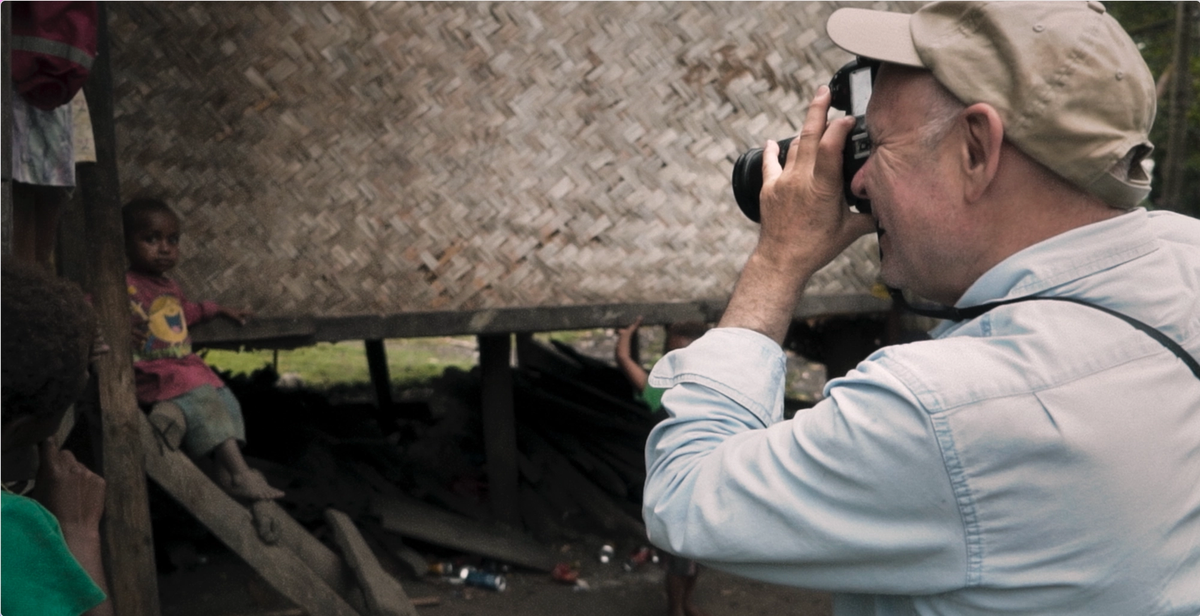“Some day the world is going to be one vast homogeneous airport terminal,” says Steve McCurry during the opening sequences of Denis Delestrac’s feature-length documentary on the acclaimed American photographer's life.
“It’s all going to be glass and metal and concrete,” McCurry says over Jordi Esgleas Marroi’s exquisite cinematography, shot through a train window along the New York subway as we pass a phalanx of anonymous office blocks.
“You could be in Shanghai or Kabul or Buenos Aires—it’s all going to be the same," the photographer says. “I’m not sure you want to live in a world without colour, without difference.”
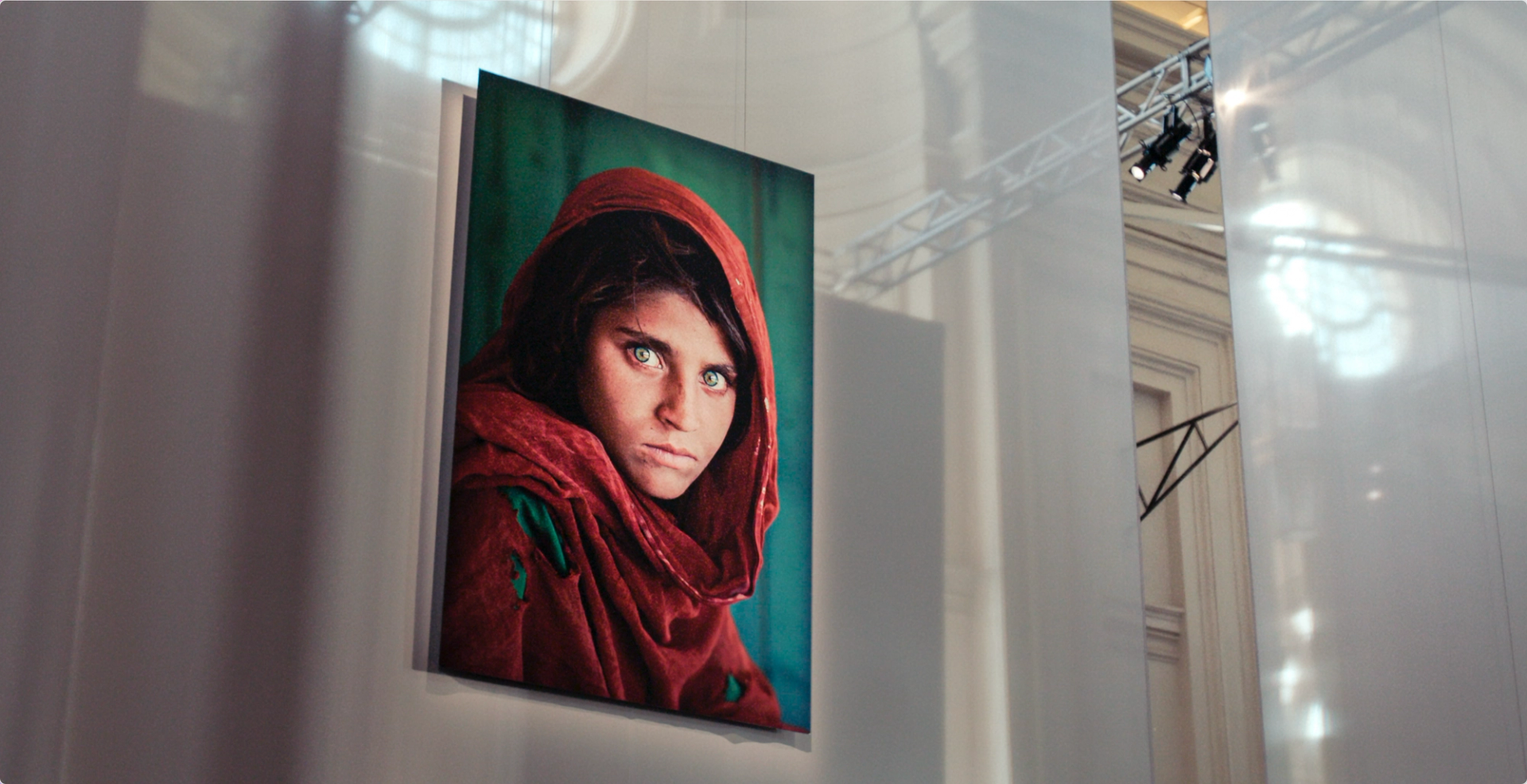
Installation shot of Steve McCurry's portrait of the 12-year-old Pashtun girl Sharbat Gula, which appeared on the June 1985 cover of National Geographic © McCURRY: THE PURSUIT OF COLOR
It’s an unexpectedly profound opener from a photographer that many dismiss as mawkish. The photography cognoscenti, in particular, are sniffy about his work. Teju Cole, writing for The New York Times, calls his pictures “boring, but extremely popular”. And it’s true that his perfect pictures present a rather sentimental view of the developing world, where he mostly works.
Packaged into beautifully printed tomes with titles such as The Path to Buddha, In the Shadow of the Mountains and The Unguarded Moment, his “photo album” unfolds as an extended travelogue, captured in expertly composed Kodachrome. McCurry: The Pursuit of Color, which premiered at the DOC NYC film festival, sets out to show McCurry is much more than these coffee table books, pivoting around a decision that changed the course of life.
It was the late 1970s, and the young photographer had been traveling around India. Roughly a year in, escaping a heat wave, he headed into northern Pakistan and the cooler climes of the Chitral Valley up in the Hindukush. He stayed for a while in a cheap hostel, where he was befriended by some Afghan men, who told of the unfolding conflict across the other side of the mountain.
“We were talking and having meals together,” McCurry recalls over a phone call. “And then they said, ‘The world isn’t really paying attention to what’s happening. We want you to come in and tell our story.’ So they were the ones who suggested it. And they were the ones who took me and showed me.”
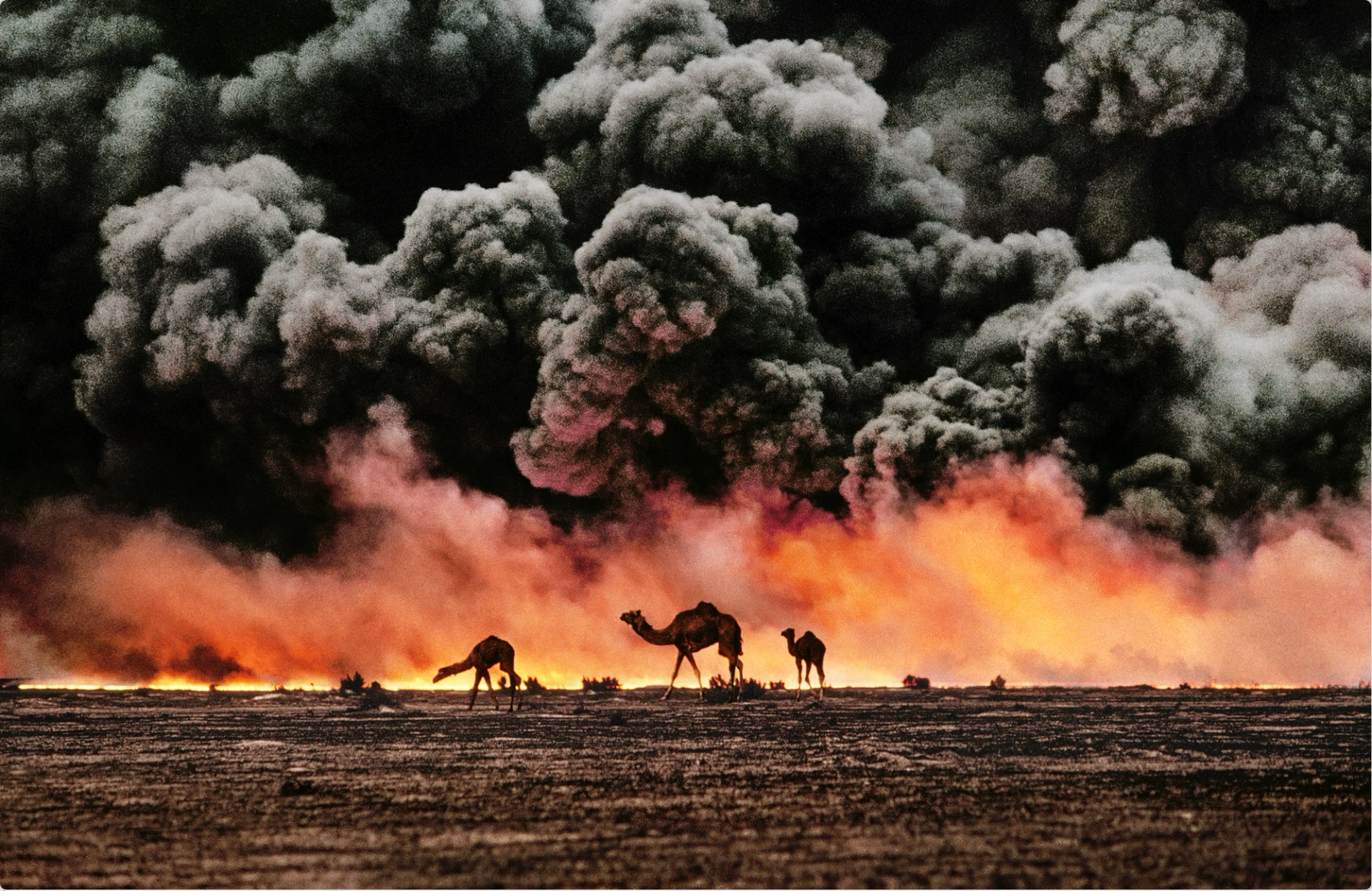
"I was sitting on the hood of my car, about 30 feet from the fire as we were driving through the desert. I saw the camels come into view and immediately visualized the image. The smoke was black and there was a little space where you could see the fire; I followed the camels until they walked past and were silhouetted."
Camels in Burning Oil Fields, Al Ahmadi, Kuwait, 1991 © Steve McCurry, courtesy Dogwoof/NYC DOCS
Remarkably, he followed them, crossing into Afghanistan illegally, then spent months photographing the young men, passing through destroyed villages, as they prepared to fight a guerrilla war against the communist government. They were farmers, mountain men, some barely men at all, and that’s how he captured them, not as soldiers. But when, soon afterwards, Soviets troops came pouring into Afghanistan to back the government, initiating a proxy Cold War, the world’s media woke up to the conflict, and McCurry suddenly had newfound currency. He was ahead of the pack.
His pictures, published in Time magazine and elsewhere, won the Robert Capa Gold Medal for their “undercover photography of Afghan rebels”. And, having never intended to be a conflict photographer, he became one, of sorts.
Over the next decade, reporting from the Iran-Iraq War, Lebanon, Cambodia, the Philippines and Kuwait, he quickly established himself as one of the leading photojournalists of his generation, joining the fabled Magnum Photos agency along the way, and returning to Afghanistan many times, taking the famous ‘Afghan Girl’ portrait of Sharbat Gula in 1984.
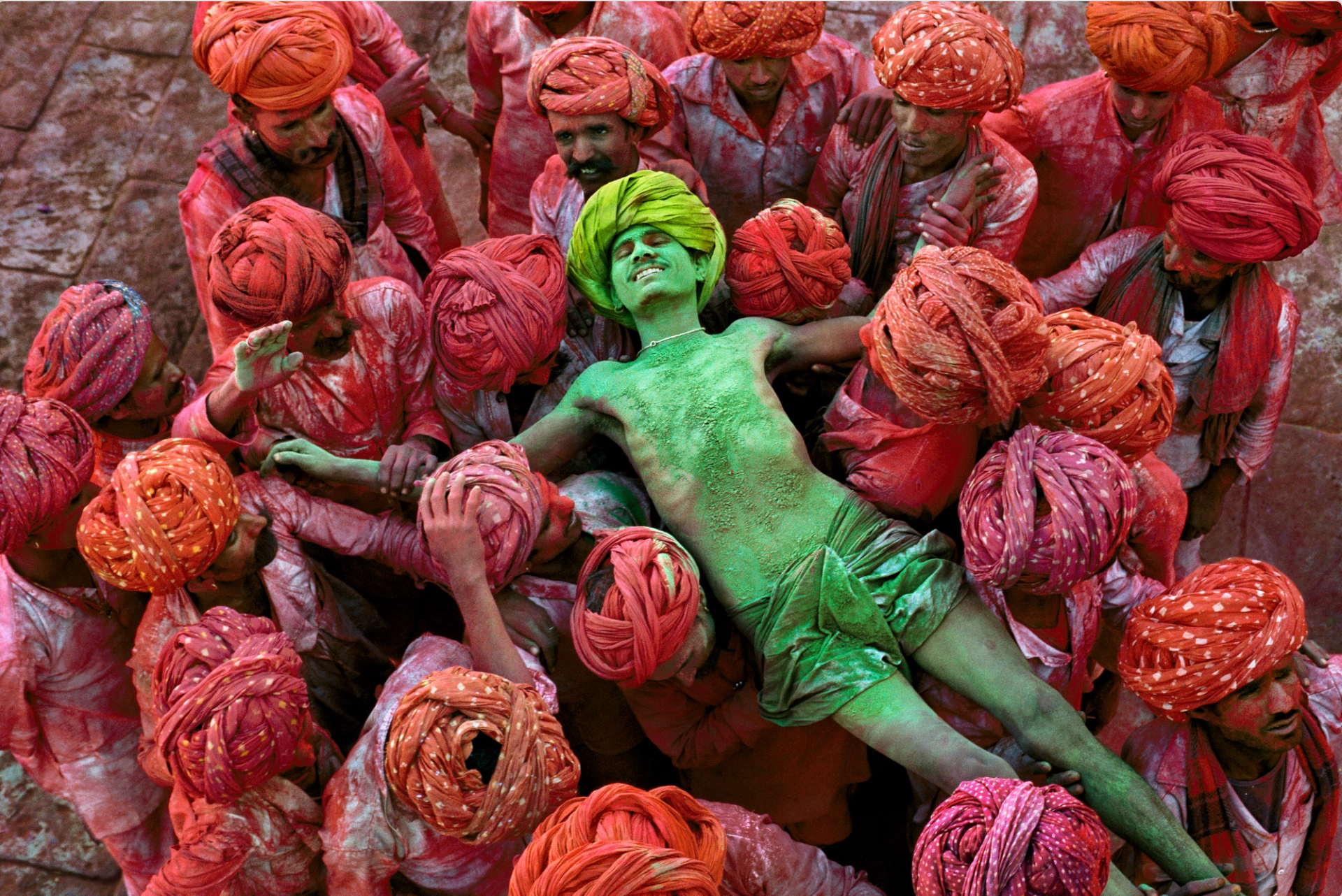
"The Holi festival is also known as the festival of colors. With powder bombs exploding around him, this man is in a state of reverie as he is carried aloft through the crowd."
Holi Man.Rajasthan, India, 1996 © Steve McCurry, courtesy Dogwoof/NYC DOCS
McCurry is sensitive to criticism of the role of photographers in perpetuating a reductive perception of the developing world, and the lack of people from that world being asked to tell their own stories.
“When I photographed the ‘Afghan girl,’ people were desperate,” he says. “They wanted humanitarian help, and they wanted weapons. So, being there, and documenting that—I think that’s a good thing.”
He turns the conversation to a current conflict. “The situation in Yemen is pretty dire. So should we not see that? Should we turn away? Should we say, ‘Well, let the Yemenis tell their own story’?”
McCurry’s images of the Gulf War and the apocalyptic scenes he encountered are particularly memorable, but the film suggests that, by then, in 1991, being such close witness to the worst aspects of humanity was beginning to take its toll. He says he tried to back away, to return to “a more humanistic, poetic view of the world”. And it seems that he refocused on the passions that had first inspired him to become a photographer, capturing ancient traditions and vanishing cultures.
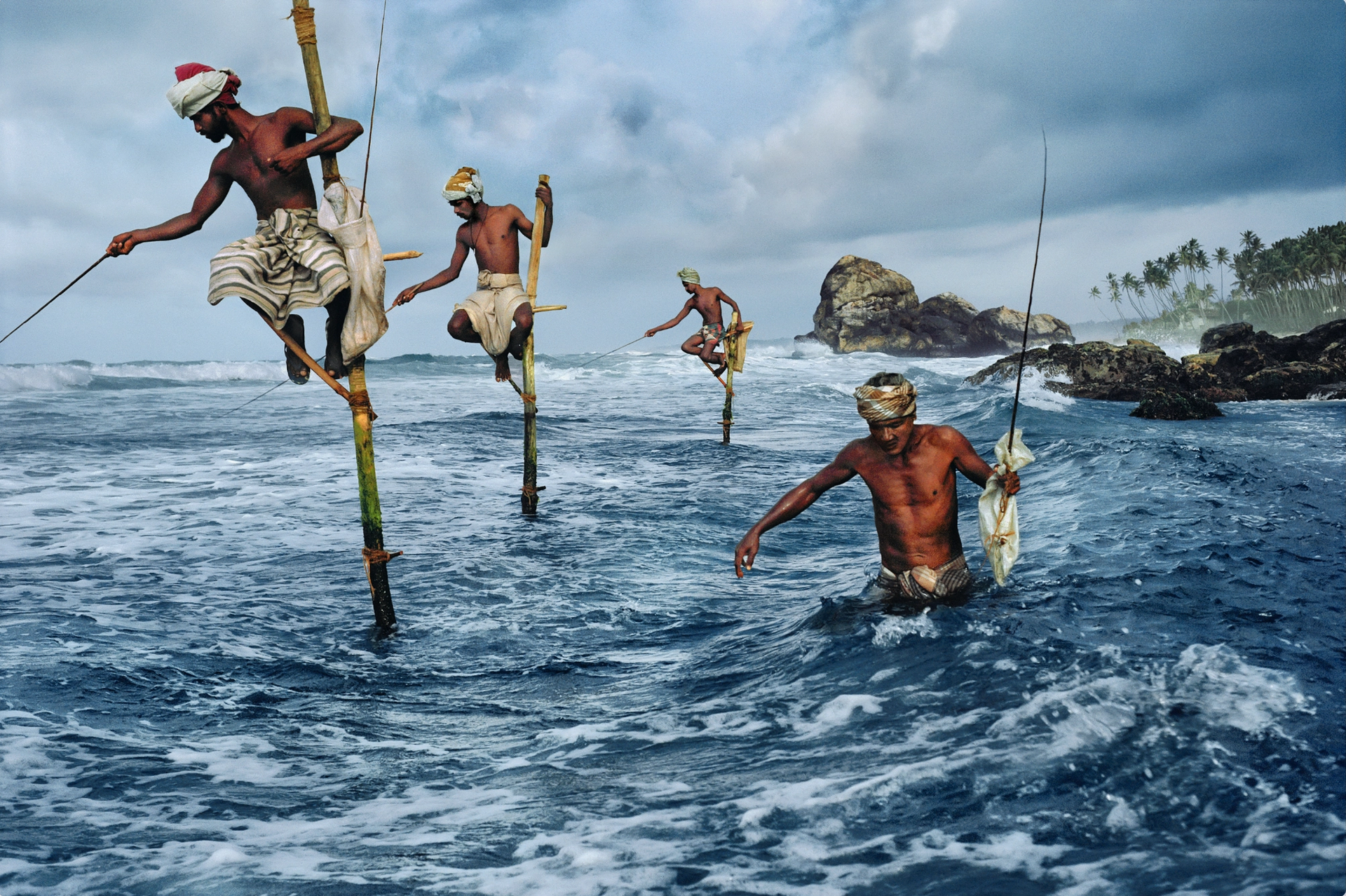
"I took this image of men fishing in Weligama off the south coast of Sri Lanka." Fishermen at Weligama, Sri Lanka, 1995 © Steve McCurry, courtesy Dogwoof/DOCS NYC
Repositioning himself as a visual storyteller and not a photojournalist, shooting what he wanted, rather than what an editor asked of him, gave him more creative licence. But it also got him into trouble when the extent to which he, or his studio, manipulated his images came to light. The documentary addresses the 2016 scandal but, of course, the defence is partial, and we hear nothing from his critics.
The film also portrays a lonely man, driven by a difficult childhood, and it provides him a redemptive ending. But McCurry resists the clichéd narrative of the aging master, seeking solace after photographing too much darkness. He tells me it was a creative decision to step back from conflict.
“In life, you want to grow, and you want to learn new things, work in different ways, go to different places, reinvent yourself,” he reflects. “You only live once. It’s good to experiment. I can’t imagine getting stuck in the same way of saying what you know, or the same subject matter. It’s good to evolve, and that’s what I did. Is not that a good thing?”
- McCurry: The Pursuit of Colour made its World Premiere at DOC NYC on 13th November


